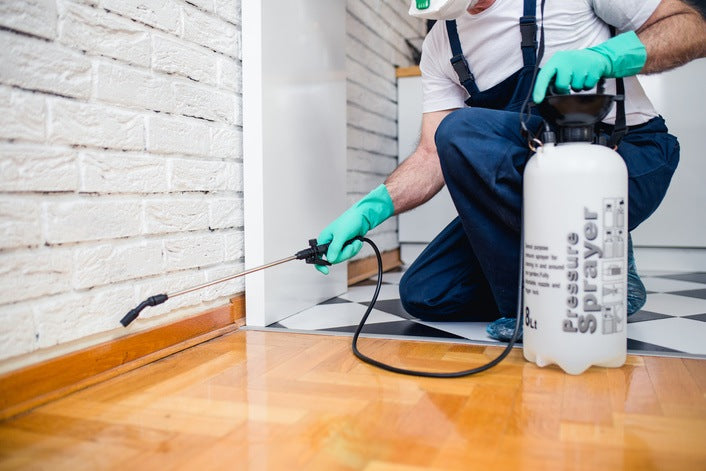Cost-Effective Pest Management Plans Offered by Pest Control Lockhart
Cost-Effective Pest Management Plans Offered by Pest Control Lockhart
Blog Article
Exploring Problem and Therapy Approaches on the planet of Insect Control
The landscape of insect control encompasses a myriad of difficulties, particularly as invasions of usual family parasites continue to evolve. By integrating preventative procedures with advanced management techniques, such as Integrated Insect Administration (IPM), property owners can much better protect their settings.

Common House Pests
When it concerns managing our space, understanding usual home parasites is important. These parasites not only interrupt our convenience however can likewise position health and wellness threats and damages property. One of the most widespread home insects consist of ants, cockroaches, rats, termites, and bed insects.
Ants, usually seen foraging in cooking areas, can pollute food and develop big colonies. Rats, consisting of computer mice and rats, can cause structural damage and carry diseases like hantavirus and salmonella.
Acknowledging the indicators of these bugs, such as droppings, nests, or attack marks, is crucial for very early intervention (Pest Control Lockhart). Proper sanitation techniques, securing entrance factors, and keeping a clutter-free environment work preventative measures. By identifying these common home pests and comprehending their behaviors, house owners can take proactive steps to reduce infestations, ensuring a healthier living atmosphere
Comprehending Bug Infestations
Bug problems can rise swiftly, transforming a small annoyance into a considerable problem if not attended to immediately. Typical elements adding to problems consist of bad cleanliness, architectural vulnerabilities, and seasonal adjustments that drive bugs indoors.
Recognizing the kind of pest is vital, as various varieties display diverse actions and reproductive prices. Rodents may establish nests in surprise locations while insects like roaches grow in damp settings. Early discovery frequently depends upon acknowledging indications such as droppings, gnaw marks, or unusual noises, which can show a problem before it becomes serious.
Ecological conditions additionally play a crucial role in parasite spreading. Warm, moist climates can assist in the quick growth of insect populaces, while changes in landscaping or building and construction can inadvertently produce favorable atmospheres. Regular inspections and preventative steps are extremely important to alleviating the risk of problems. An informed strategy to comprehending these dynamics prepares for efficient insect management methods in the future.
Treatment Approaches and Techniques
Reliable therapy approaches and strategies are vital for mitigating bug problems and recovering a secure atmosphere. A complex technique is usually best, incorporating chemical, biological, and mechanical methods tailored to the specific insect and the severity of the problem.
Chemical treatments include using insecticides and herbicides, which can properly remove insects. Appropriate application and adherence to safety standards are critical to minimize risks to human beings and non-target microorganisms. Integrated Insect Management (IPM) motivates the judicious use chemicals as a last hope, depending rather on monitoring and limit levels to establish intervention needs.
Biological control techniques include introducing natural predators or bloodsuckers to minimize pest populations. This strategy is progressively preferred, specifically in agricultural settings, as it promotes environmental sustainability.
Mechanical methods, such as traps and obstacles, provide instant relief from bugs without presenting chemicals. Alternatives include sticky traps for insects or physical barriers for rats.
Eventually, the selection of therapy technique ought to consider the details bug, the environment, and possible effect on human health and environments. A well balanced combination of these methods can effectively take care of infestations while promoting long-lasting bug control remedies.
Safety Nets for Homes
Proactively addressing bug issues prior to they escalate is essential for maintaining a healthy home environment (Pest Control Lockhart). Implementing reliable safety nets can considerably reduce the probability of problems, ultimately safeguarding both your residential or commercial property and wellness

Appropriate landscape design also plays a critical role in prevention. Maintaining hedges and trees trimmed away from your my review here house lowers the chances of insects locating their method indoors. Additionally, make sure that drainage systems are operating successfully to stop standing water, which can draw in insects and various other pests.
Lastly, regular inspections are suggested. Frequently looking for signs of bug task permits early treatment. By taking on these safety nets, homeowners can develop a setting that is much less welcoming to insects, consequently boosting their general lifestyle and minimizing the requirement for considerable parasite control treatments.
Industrial Insect Control Approaches
A comprehensive technique to commercial insect control is crucial for companies intending to keep a risk-free and hygienic setting. Effective strategies entail a combination of normal inspections, worker training, and the application of Integrated Bug Administration (IPM) methods.
Normal assessments make it possible for very early detection of parasite activity, enabling timely treatment. Services need to develop a routine timetable for these assessments, concentrating on risky areas such as cooking areas, storage rooms, and garbage disposal sites. Worker training is just as crucial; useful link team should be enlightened on the indications of insect problems and the relevance of reporting them right away.
Carrying out IPM methods helps reduce parasite concerns sustainably. This consists of environment modification, such as securing entry factors and reducing clutter, in addition to using natural deterrents prior to considering chemical therapies.

Moreover, teaming up with a qualified pest control service provider ensures access to professional understanding and innovative therapy choices. This collaboration can result in personalized bug control prepares customized to the specific demands of the organization, minimizing threats and enhancing overall efficacy. Inevitably, an aggressive and informed method cultivates a pest-free atmosphere, protecting both public health and wellness and company online reputation.
Conclusion
To conclude, effective bug control demands an extensive understanding of typical house bugs and their actions, paired with targeted treatment techniques. Applying preventive procedures along with treatment methods such as Integrated Bug Management and biological control enhances the capability go to alleviate problems. Routine inspections and a mix of chemical and mechanical remedies better add to maintaining pest-free environments. Inevitably, a well-shaped approach to pest management is essential for securing living areas from undesirable intruders.
Report this page